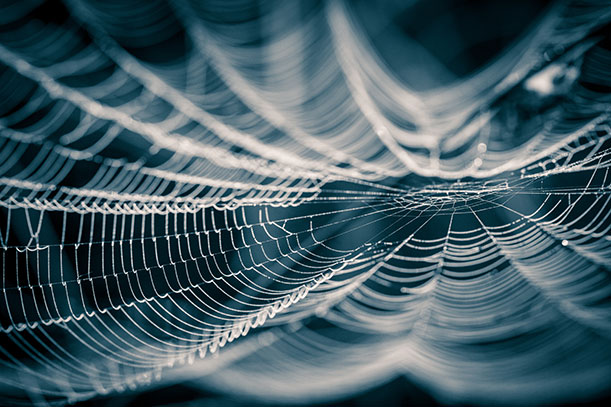BOOMbox at Home: Gross Outdoors
October 29, 2020

Explore the science of some of the gross things you can find in the great outdoors.
Scat
No one wants to get up close and personal with poop! Gross as it may be, animal poop, or scat, is a great resource for learning about the diets and behaviors of animals. Luckily, you can get learn from scat while avoiding the smell with these models that are safe to touch or even eat. Start out by searching, outdoors or online, for some examples of scat. Then, use play dough and mix-ins to recreate what you see in this play dough scat lab from Dr. STEM Mom, or pick some candy and try to match snacks and scat with this candy scat worksheet. What patterns do you notice? Use your observations to mix up some strange (model) scat and describe the kind of animal, real or imaginary, that you think would make scat like that.
Spider Webs
Spider webs are an excellent example of evolutionary engineering. Most spiders can produce four or more different types of spider silk, a material that is both stronger than steel and highly elastic. They use this silk to build incredibly intricate webs to catch their food. You can learn more about how, where, and why spiders build various types of webs from the Smithsonian Magazine and the British Natural History Museum. After reading about spider webs, see how webs catch food in this sticky spider web game. Then, see how the spider knows whether something caught in their web is food or foe with this spider web vibration simulation activity. Both activities are great for younger learners and can be done indoors or outdoors with minimal supplies.
Potions
Eye of newt, hemlock, cat hair, blood so blue--these ingredients sound like something out of a fairy tale, but what if you could use them to make potions for real? Believe it or not, horseshoe crab blood is not only blue, it’s a key ingredient for a test used in evaluating the safety of every FDA approved drug. Learn more about why we harvest horseshoe crab blood or how horseshoe crabs create an unparalleled biomedical technology.
But you don’t need exotic ingredients to experiment with potion making. You can make your own plant-powered potion. It's a fun way to discover the sensory properties of plants you gather outdoors. All you need is a container to hold your potion, such as a bucket or bowl, and maybe a stick for mixing. Your imagination is the limit when it comes to making potions. You could explore the textures, smells, and colors created by combining things you gather, or create your own magical recipe. Of course, remember that your stomach probably isn’t as strong as your imagination--only eat or drink your creations if you know all the ingredients you used are safe to eat.
Trees drop many interesting potential potion ingredients in the fall, such as pine cones and colorful leaves. You may find plants such as the Eastern Black Walnut, which drops green nut pods. Many flowering plants make seeds, such as fluffy milkweed pods--if you learn how to harvest milkweed seeds, you can plant them in a future butterfly garden next spring. If you want to learn more about a mysterious plant, you can snap a picture and identify it using Seek, a nature identification app.
Scientist of the Week
Patricia Yang is a physicist studying the fluid mechanics of bodily fluids--blood, urine, feces, and more. For example, after observing that wombats produce square feces, she began working to understand how the mechanics of their intestines could be adapted into new manufacturing methods as well as colon cancer screenings based on human fecal shape. Yang is currently a post-doc at Stanford and previously studied at the Georgia Institute for Technology and National Taiwan University. Read more about her work and other types of scatological science.
Written by Eli and Frannie.